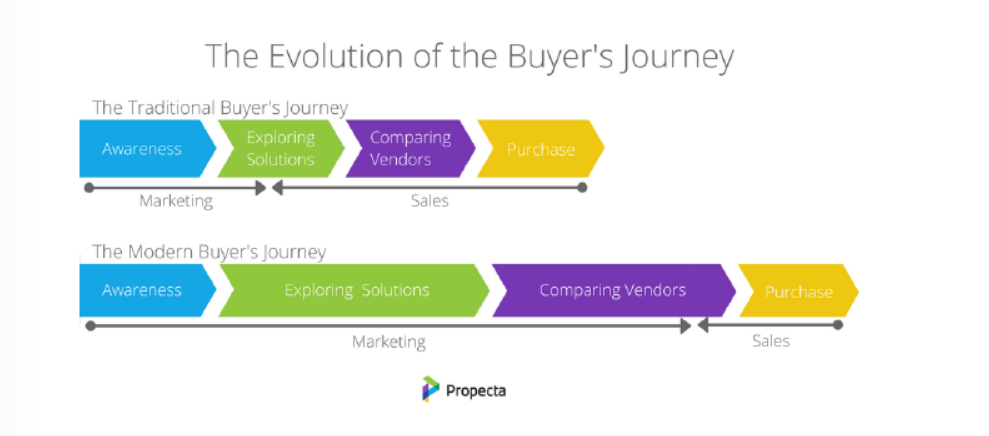
Image Source: Unsplash
Any experienced salesperson will tell you that getting a ‘no’ from a prospect seldom actually means ‘no’. In fact, a ‘no’ can mean a lot of things:
- Not right now
- I’m not ready to commit
- I’m not willing to put time into this at the moment
- I’m not able make a purchase this quarter
- I’m not convinced of the value of this product/service
- Etc.

Download Branding Resources Guide
Building a brand starts by having the right tools and advice. Download our top 10 essential tools and resources to kick-start your branding.

Statistics show that a salesperson who gives up with a prospect after that first ‘no’ is missing out on a huge potential opportunity:
- The average customer says no an average of four times before saying yes
- It takes an average of 8 cold call attempts to reach a prospect
- 80% of closed sales require 5 follow-up calls
With this knowledge available, why is it then that a surprising 44% of salespeople stop contacting a prospect if there’s no response to their first follow-up?
It really boils down to emotion. Many are trying to avoid being bothersome or overbearing. Many others are afraid of multiple rejections or angering a customer.
However, the reality is that if you truly believe you have a great product or service that will benefit your customer, you are doing them a favor by trying to stay on their radar! The key to being persistent (without being annoying) is to continuously add value to the conversation during each interaction with your prospect.
In this blog, we’ll discuss how to add that value, and a few other tips that can help you stay efficient and effective with lead nurturing campaigns.
4 Ways To Add Value To Your Follow Ups
Listen First
The first conversation you have with a prospect is no doubt the most important. Be sure to listen more than you speak. If you can learn enough about the prospect in your first call, you’ll have a much easier time delivering value to them in your subsequent follow ups.
In that first conversation, try to find out:
- What their main pain points are
- Who their competitors are
- What keeps them up at night when it comes to their work or business
- What are they looking for in a solution
These important questions will help you to gain a solid grasp of what your prospect needs— and knowing this will help you incredibly in the following steps.
Become The Go-To Expert For Your Prospect
When speaking with a prospect about your business and what you offer, it’s important that you are seen as the subject matter expert. You want the prospect to feel that you are the immediate go-to if and when they need to pick a solution.
Part of positioning yourself in this way is to give your prospects specific and actionable tips for their business that are within your general field of expertise.
For example, let’s say you were representing a company who supplies machine parts to automakers. The automaker you are prospecting mentioned off-handedly that he is having an issue with one of his machines (one that your company doesn’t sell parts to). So, after your call, you do some research on the machine. You find some self-fixes the automaker can do, and you also give him the number for a trusted maintenance company that you know.
Then, you include the information you found in a follow up email to your prospect— just as a PS.
Building this kind of trust with prospects has a huge effect on how they see you and how they digest your follow-ups. If you’re offering them valuable, actionable advice in each touchpoint they are far more likely to not only open your emails but respond!
Share A Helpful Resource (With No Strings Attached)
If you’ve sent a few follow-ups with no response, it can be easy to lose heart. But don’t! You just have to think of another way to reach out to your prospect and add value.
One way to do this is to include another helpful resource in your email. For example, did you just come across a recent study or eBook that your prospect might find interesting? Does it cover something relevant to your prospect’s business or industry? Include it as the introduction to your follow up email.
As with the tip above, adding value to your prospect’s day makes your email more of a relationship-builder and less of an annoyance.
Ask Your Prospect What Their Preferred Method of Communication Is — And Stick to It
We get it. Sometimes it’s just easier to send an email than to make a call. However, the way you follow up needs to be the way your prospect prefers it, not you. You may believe that busy B2B executives would prefer email. But actually, one recent study showed that 57% of C-level buyers prefer that salespeople call them instead.
You never know what the easiest way to reach someone will be, so the best way to find out is simply to ask! Odds are the prospect will appreciate that you are trying to make things more convenient for them.
3 Lead Nurturing Best Practices to Start Using Today
Use Automation
Today’s marketing automation tools have made automating sales follow-ups incredibly easy. Tools like Salesforce remind salespeople when it’s time to follow up, include notes from previous touchpoints and prospect details all in one simple platform. You can automate your follow ups using templates and set them at timed intervals. This is a great way to ensure that you are being persistent and that nothing falls through the cracks.
Keep in Touch
Things in business change daily. Positions change, people leave companies and join others, and roles shift. However, you shouldn’t waste the time and effort you’ve put into a prospect just because they leave their current company. Continue building your relationships with occasional follow-ups. Who knows when those might lead to a referral down the road!
Outsource Your Lead Generation
If trying to source new leads is eating into the time you have to perform consistent follow-ups, it’s time to look into outsourcing. Great B2B lead generation services can help you find, qualify, and schedule meetings with great leads so you can focus your energy where it’s best served— closing deals and following up with your prospects.

